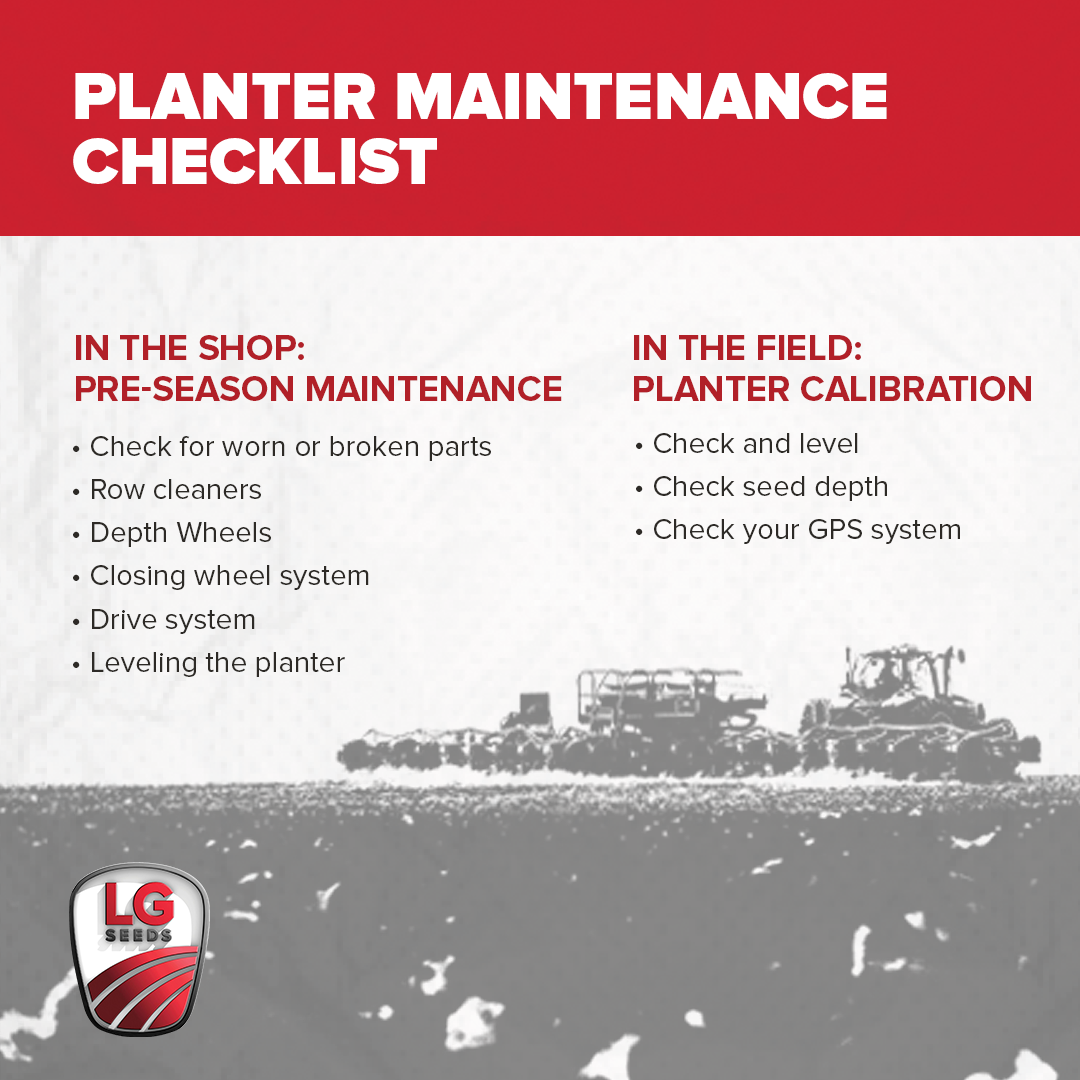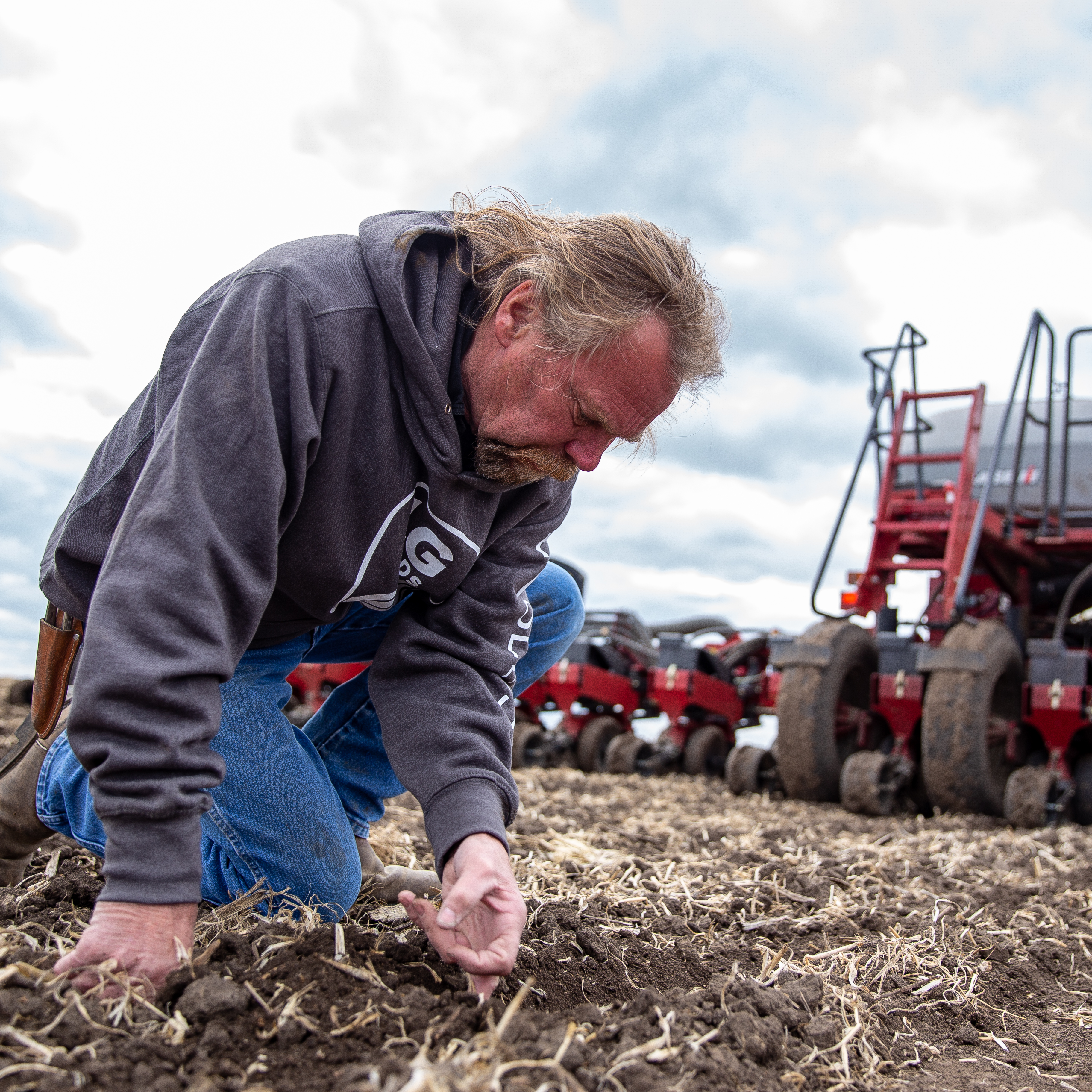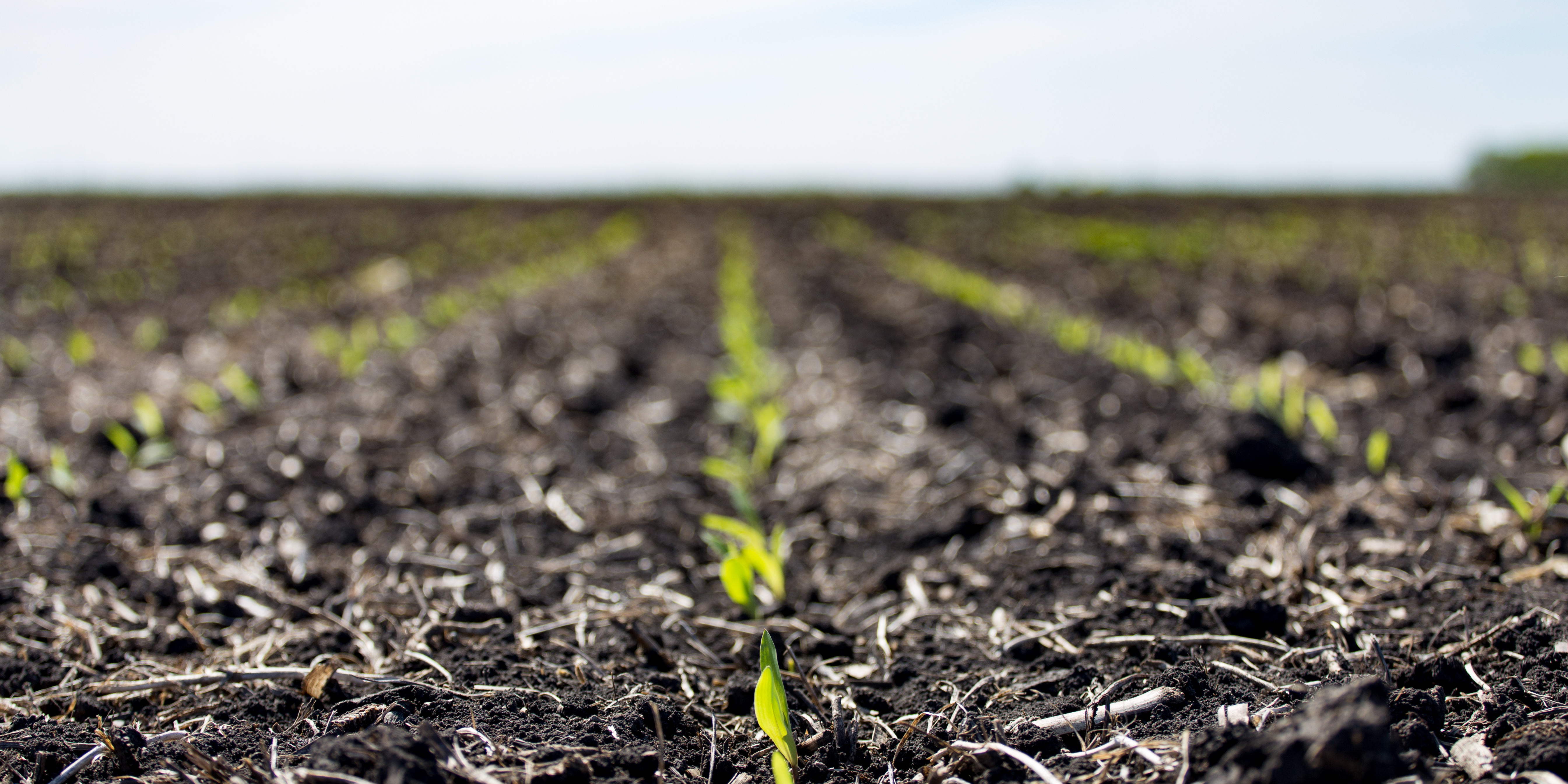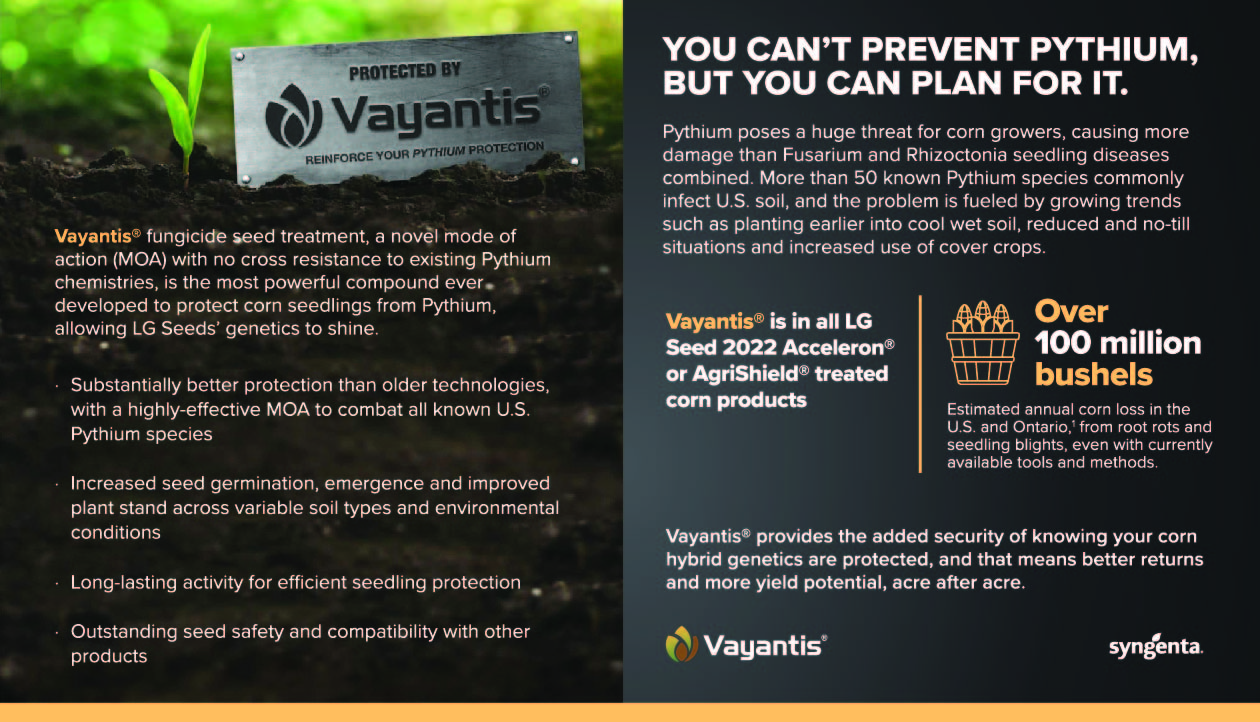AGRONOMIC RESOURCESTO SUPPORT EVERY SEASON
YOU CAN TAKETO THE FIELD
Five Tips for Achieving Strong, Even Corn Stands
When planting corn, farmers have one shot to get it right each growing season. Nailing execution is critical. While there are many things a farmer can do to help get crops off to strong starts, LG Seeds Agronomist Brian Weihmeir says planter prep is the most important.
 #1. Allow plenty of time to ready the planter
#1. Allow plenty of time to ready the planter
Allowing enough time to go through a planter’s major components, reference owner’s manuals and make any needed settings tweaks is important. Even minor adjustments can add up to quite a bit of yield, according to Weihmeir. For example, he says the creation of a good seed trench hinges on double disc openers matching the specifications provided by the manufacturer.
Farmers undertaking major projects like retrofitting a planter for an attachment should give themselves a couple extra months to get the equipment attached and make sure it’s working properly, he says.
“If you aren’t doing anything major or replacing broken components, you can probably plan on it taking around a month to get everything ready,” Weihmeir says. In recent years, he has encouraged farmers to pull planters out of the shed earlier than normal. “You used to be able to go to your equipment dealer and get the parts right off the shelf or the next day,” he explains. “Now, you might wait a week or even a month to get parts.”
Doing a good job cleaning out and winterizing the planter once you’ve wrapped up for the season can help farmers anticipate needs and pave the way for smoother sailing next spring, Weihmeir adds.
#2. Review your seed plan
Many farmers buy seed, chemical and fertilizer around the start of the year, and it can be easy to forget specifics in the subsequent months. Reviewing plans before the frenzied planting season is key.
“Reach out to your seed provider to make sure you’re putting those corn hybrids on the right acre, planting seed at the right population and setting yourself up for success through the growing season,” Weihmeir advises. Noting that seed is a full-season discussion, he says, “Farmers need to make sure they’re managing those hybrids appropriately, whether that’s a split application of nitrogen, a late-season spraying of fungicide or earlier harvest of a particular hybrid. All of this plays into seed placement.”
“Choosing hybrids with strong emergence and vigor ratings also plays a major role in obtaining good plant populations and yields,” Weihmeir says, noting his company has hybrids that shine in early planting scenarios
#3. Consider seed treatments for added protection, starters for an early jolt
“A seed treatment can provide extra protection against diseases,” Weihmeir says. “LG Seeds treats all its corn seed with Vayantis® to help control Pythium that can be problematic early in the growing season when soils are cool and wet.”
He also points out farmers have many more options for starter fertilizers now than five to 10 years ago. Adding fertilizer in-furrow can help get the corn plant off to a good start, according to Weihmeir. Attachments for these tools are available for most planters, but Weihmeir also acknowledges these are investments and require extra time to monitor, fill and maintain.
#4. Wait for fit soil
Planting too early is a common mistake that can have a season-long impact, Weihmeir explains. The tendency is to start a day or two too early, as farmers are watching the calendar and anxious to get crops planted in a limited window. It’s important to wait until soils are dry. Planting into wet soils can create sidewall compaction that roots struggle to break through.
Soil temperatures are also important, since imbibitional chilling is a risk for corn when soil temperatures are under the 50-degree Fahrenheit mark during the first 24 to 48 hours. Colder temperatures also delay emergence, Weihmeir say

#5. Get out of the cab to check your work
“I think one of the blessings and curses of today’s planters is how much technology is in the cab. It’s easy to forget to double-check what’s going on behind the planter,” Weihmeir observes.
“It’s important to get out of the tractor and adjust for field conditions. Make sure you’re planting into good soil moisture and setting down pressure correctly. Adequate planting depth and good seed placement are key to putting maximum yields within reach,” Weihmeir says.
Contact your local LG Seeds agronomist to review your plans for spring today.







Agronomy Team